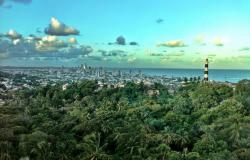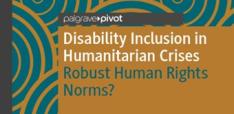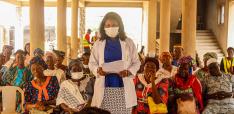Modern Day Slavery in Brazil: A Report from the Field

This is part of a forthcoming Global Policy e-book on modern slavery. Contributions from leading experts highlighting practical and theoretical issues surrounding the persistence of slavery, human trafficking and forced labour are being serialised here over the coming months.
This chapter provides a brief overview of modern day slavery in Brazil, a clandestine, criminal activity found in every corner of the country and involving activities as varied as illegal logging of valuable timber to harvesting the coffee supplied to well-known chains of coffee houses, or keeping undocumented immigrants in illegal sweatshops to produce garments for the fashion industry. In a continental sized country, with glaring social inequality and a history of racism and exploitation, what measures are being taken to repress and eradicate slavery, how successful are they, and how can they be improved? What role is played by the government at local, state and federal level as well as international organizations? What is the role of the public and private sectors, and of civil society? And in a world where so many competing crises vie for our attention, how can we ensure that the fight for humane treatment of our most vulnerable populations remains as one of our most urgent ongoing priorities?
It is August 2020 and a loudspeaker car is patrolling the streets of the hot little town of Timbiras, Maranhão, in the interior of the dirt-poor northeast of Brazil, bringing good news in a place where jobs are hard to find. The offer is breathtaking: steady work harvesting onions at a salary of 3000 reais a month, almost three times the normal wage. Along with several of his friends, twenty-year old Antonio signs up on the spot.
Two days later they join a busload of forty-two young men bound for Ituporanga in the distant state of Santa Catarina. After a five-day journey they arrive, full of hope and excitement and head for one of the local farms to start the great adventure. But the reality is very different from the dream. It is winter in the south, and there is frost on the ground. The men have no warm clothes, the work is grindingly hard, the overseers drive them relentlessly, and they sleep on old mattresses on the dirt floor of the barn. When payday comes around, they are presented with a steep bill for their bus fare, their food and their work tools, and the contractor brooks no argument. Although he doesn’t know it, Antonio has become a victim of modern day slavery, and It takes several weeks before he admits to himself that he has been tricked. So he does the only thing he can think of. He sends an audio message to his mother by Whatsapp, begging for help.
It’s a sad old story that has changed very little since the late nineteenth century rubber boom, when young men like Antonio were lured into the farthest reaches of the Amazon forest to tap rubber in exchange for their supplies, in a never ending cycle of debt. Or the 1970s when the military government was opening the vast regions of Amazonia promising “land without men” for “men without land,” and proposing a model of economic development based on logging, ranching and mining. All of these activities required a large amount of manpower easily available, then as now, from the impoverished northeastern states.
In response to the government's promise of land, waves of migrants swept into the region, some to make their fortunes, others to eke out a hardscrabble existence in the unfamiliar jungle, and yet others to trade the only thing they had, their labor, for some sort of a living.
When the Amazon frontier was opening up, this is how the system worked, and fifty years later little has changed. Young men like Antonio are still enticed with promises of adventure and good money. To sweeten the deal, they are given a cash advance, and, from that moment on, they are trapped. They are then transported to their workplace, by truck, bus, train or even by plane. Conditions on the job are generally precarious in the extreme. If they are in the forest, they will likely string their hammocks under a plastic sheet, work from dawn to dusk, eat a poor diet, drink dirty water, and suffer from mosquito bites, malaria, and work-related accidents. Divided up into small teams to keep them from any thoughts of rebelling, they are “protected” by armed overseers under the guise of security guards.
From the minute they pocket their advance, their debt begins to accumulate. When payday comes around after weeks of backbreaking work, they discover that they owe the company store for travel, food, clothing, tools and medicine. At the end of the job the contractor will often bring them out to the nearest town for a few days´ rest and recreation, long enough to have a few drinks, visit the local brothel, and run up a new debt. And then, when the money is gone, it’s time to go back to work.
Many of them spend years trapped by never-ending debt, isolation, and by the personal code of honor that dictates that if you owe, you pay.
Who are the people involved?
At the top of the chain is the boss. He needs the job done, so he hires the contractor. The contractor is responsible for hiring and managing the labor and delivering the contract on time. In order to do this, he works with overseers (who frequently double as gunmen,) the canteen manager, the cook, the nurse, the truck driver and the policeman who turns a blind eye as the truck goes past.
At the bottom of the pile comes the worker, often referred to deprecatingly as the peon. He may have roots in one of the local communities, and have a family to whom he returns from time to time. He may be completely uprooted from his family and have become a professional migrant worker, known in Brazil as a “peão do trecho.”
95% of the victims of debt slavery are male, and 75% of them describe themselves as being black or of mixed race. Some come from situations of child labor, many are barely educated, and most have no land and no money. Migrants and marginalized, they are frequently trafficked internally in the huge country that is Brazil. They drift from job to job, and once caught in the web of slavery few manage to escape. Figures are hard to compute, but those in the government whose job it is to detect and repress slavery estimate that, for every one of the 55,000 people successfully rescued from slavery since 1995, there may well be three or four times as many who remain undetected. These days they are no longer confined to the ranches of Amazonia but are scattered across the length and breadth of the country, in both rural and urban settings.
The number of rural and urban cases detected varies from year to year, but the majority of cases still occur in the rural areas, involving tree plantations, coffee, fruit and vegetables, soy, cotton, corn, beans, and extractivism: (fibers, nuts and wild fruits such as açai.) Non-agricultural activities include charcoal burning, mining, construction and, in large cities like São Paulo, sweatshops staffed by illegal immigrants from Bolivia and Paraguay.
These days the scene in Amazonia has changed dramatically, and slavery has become far more difficult to detect. Cases of slave labor involving large gangs of men clearing the forest to create pasture for cattle have given way to small groups illegally extracting valuable hardwoods which are usually found in indigenous territories or environmental protection areas. These tend to be lightning operations taking place over the course of a few weeks, in areas of dense forest where selective logging is difficult to monitor through satellite images. Because the timber is so valuable, bribes are widespread and there is consequently little interest in reporting these cases to the relevant authorities.
From the 1970s through to 2005, 80% of reported cases of slave labor were located in Amazonia. From 2005 onwards the percentage had dropped to 50% and, by 2020, the largest number of reported cases were in the southeastern states of Minas Gerais and São Paulo, with the Amazonian state of Pará relegated to third place. Trafficking routes, which ran traditionally between the northeastern states and Amazonia, have become both more complex and more difficult to detect, and now include travel to all regions of the country.
How do these cases come to light?
As discussed above, varying forms of debt slavery have existed in Brazil since the days of African slavery, based on the ancient notion of considering the “other,” whether of African or indigenous descent, as being of less intrinsic worth than the dominant classes of European ancestry. And although slavery in Brazil was officially abolished in 1888, old thought patterns die hard, and victims of modern day slavery are not only relegated to the status of merchandise, but are also considered to be disposable in the sense of not belonging to the slaveholder and being easily replaceable.
Until the 1960s the vast area of Amazonia, which covers over 60% of the land surface of Brazil, was largely ignored by government and the majority of Brazilians who preferred to live and work in the southern part of the country. So it wasn´t until the 1970s that the first rumors surfaced of a new type of exploitation involving forced and debt slavery, extreme isolation, restriction of liberty, violence and even murder. The report came from the prelacy of São Félix do Araguaia, in the state of Mato Grosso, where, 1971, bishop Pedro Casaldaliga issued a document entitled “An Amazon Church in Conflict with Large Landowners and Social Marginalization.” This was published at the height of the military dictatorship, and, by distancing the church from her traditional allies, (the state and powerful landowners), the bishop was taking a courageous stand on behalf of the unconsidered laborers on the huge estates. And, as we shall see, the church was to play a major role in documenting and addressing cases of slavery in the Amazon region and later acros the country.
In 1975 the Brazilian Council of Bishops took the dramatic step of founding the Pastoral Lands Commission (CPT) which was to become the flag bearer in both drawing attention to and seeking to remedy the widespread violence by both landowners and the state against the rural poor. Over the next twenty years, as the military government slowly withdrew, the church continued to report on the situation and defend the victims, and in 1994 they joined a formal complaint lodged in the Inter American Commission for Human Rights against the federal government. The charge was that the Republic of Brazil had neglected to protect one of its citizens named José Pereira against slave labor and grievous bodily harm. (José had been involved in a situation of forced labor on a ranch belonging to a state deputy in Pará. On attempting to escape he had been pursued, shot several times, and left for dead by the roadside.)
What steps did the government take?
This case shed an unwelcome light on the situation of slavery in Brazil, and the civilian government of Fernando Henrique Cardoso responded with alacrity. They established an interagency body GERTRAF (Executive Group for the Repression of Forced Labor,) charged with coordinating activities to eradicate slave labor, and created a Flying Squad consisting of labor inspectors and Federal Police. Their job was to investigate reports of slavery (largely received through the church and the CPT,) to undertake search and rescue, to issue identity documents and work contracts, and to ensure that the workers were paid and return them to their home states if they wished. The Federal Police provided the documentation necessary to support criminal prosecutions and fines through the office of the attorney general.
While the Flying Squad has been remarkably successful and has succeeded in rescuing more than 55,000 workers, they are only able to prove the existence of slavery in 45% of the cases they investigate.
By 2003, due to unremitting efforts by government and civil society, (notably the Pastoral Lands Commission,) the joint Commission to Eradicate Slavery, which included government, civil society and representatives of the business sector, had added another successful tool to its toolbox, the Lista Suja. This roughly translates as the Registry of Offenders. Individuals, and businesses found to be involved in slavery are publicly named and shamed, and forbidden access to any funding from state, federal or bank sources for a period of two years.
For every rule and sanction imposed, the bosses quickly learned a workaround, and the game of cat and mouse continues to this day. The Flying Squad relies on the element of shock and awe and has no judicial standing to ensure that workers are paid on the spot. Bosses frequently find excuses not to pay, and cases have to be referred to the courts, which are notoriously slow. In response to this, the government has issued the Flying Squad with satellite phones which permit them to freeze the bank accounts of the bosses when caught in flagrante.
By 2004 the revised penal code expanded the previously somewhat ambiguous definition of slavery (“reducing someone to a situation analogous to that of a slave”,) to cover not only forced labor and restriction of liberty, but also degrading conditions and exhausting work days. That same year a coalition of government, civil society, and business came together to figure out ways to detect and eliminate any traces of slave labor in the value chain of different Brazilian products. This was the first time that such an initiative had existed anywhere in the world, and Brazil was justly proud. By 2014 things had progressed to the point that the coalition was renamed Institute of the Pact for Eradicating Slavery (InPact,) and became a de facto clearing house for information about and action on behalf of eradicating slavery, and a direct channel of communication with the private sector about how to monitor every step in their processes of production.
Meanwhile the individual states were gradually assuming more responsibility for what went on within their borders, and setting up their own versions of the Flying Squad. By 2020-21 the champion state in uncovering and prosecuting cases of slave labor was the southeastern state of Minas Gerais. The main value chain? Coffee.
Currently the main channel for reporting suspected slave labor has ceased to be through the CPT, which now processes only 30% of such complaints. The rest are lodged through a secure phone line (Dial 100), or a secure online site (Ipê.) But the CPT continues to be active at grassroots level, setting up, in 2017, a program of integrated action directed at combating slave labor (RAICE) which focuses on the principal labor-recruiting states of Piaui, Tocantins, Maranhão and Pará. It is thanks to RAICE that the mother of young Antonio (about whom we read at the beginning of this chapter,) was able to contact the relevant authorities and arrange for a rescue.
What doesn't work?
Other attempts to repress slave labor in Brazil have been less successful. Over the decade 2010-2020 the annual budget allotted by the federal government to combat slave labor has been slashed from R$65,000,000 to R$25,000,000. While there are officially 3644 positions for federal labor inspectors, there is currently a shortfall of 1544, and not one labor inspector has been hired since 2013. As a result, only 20% of reported cases are investigated, and of these only 45% succeed in proving the existence of slave labor.
The powerful agricultural lobby in congress has worked hard to hinder progress, and managed to block the publication of the Lista Suja for several years, although labor inspectors continued to compile the statistics. Rigorous punishments, such as expropriation of workplaces found to be involved in slavery, payment of massive fines, new laws on trafficking, and jail sentences exist on the books but are generally rendered inviable by the glacial pace and excessively bureaucratic procedures of the judicial system. This means, in effect, that most lawsuits are never tried. If they do reach the courts, they then become entangled in the even lengthier process of appeal.
Consequences and Reintegration
As for reintegration of rescued workers, this is a complex issue which requires efforts at all levels of society: raising awareness, providing emergency assistance, creating sustainable employment and, above all, political will. Victims of slavery who are rescued currently receive the moneys owing them, sometimes with an additional sum for damages, are awarded unemployment benefits for three months, and may be returned to their homes if they so wish.
The role of international organizations
Were it not for the Organization of American States, the existence of modern day slavery in Brazil might never have come to light, and the Brazilian government might never have been obliged to acknowledge its responsibility and take steps to remedy it. The International Labor Organization plays an important role in addressing issues in supply chains. The International Organization for Migration helps repatriate victims of trafficking, while the Rapporteur from the UN High Commission for Human Rights reports to the deliberative body on the situation in a specific country. The situation of slavery in Brazil has been highlighted in different hearings at the UN in Geneva, the Inter-American Commission on Human Rights, and the OECD.
Conclusion
In the face of the continued existence of slave labor, the role of government is to prevent, detect and punish crime, to rescue victims and provide restitution. The fight to eradicate slavery in Brazil has come a long way, but it still has far to go and requires the cooperation of each one of us, to be aware, to speak up, to pressure companies and boycott products arising from the use of slave labor, to lobby government, and support organizations that work to defend the right to fair work under decent conditions. At a time of so many competing crises, it is vitally important that we keep this issue firmly in public view, taking personal and collective action to do so. Until we take responsibility for one another and persuade others to do likewise, the scourge of slavery will continue.
Binka Le Breton is co-founder and director of the Iracambi Rainforest Research Center in Brazil's Atlantic Forest, which works in ecosystem restoration, research, education and public policy. She writes and speaks internationally and has published six books on environmental and human rights. She can be reached via the following email binka@iracambi.com
Photo by Juniani Gonçalves from Pexels


